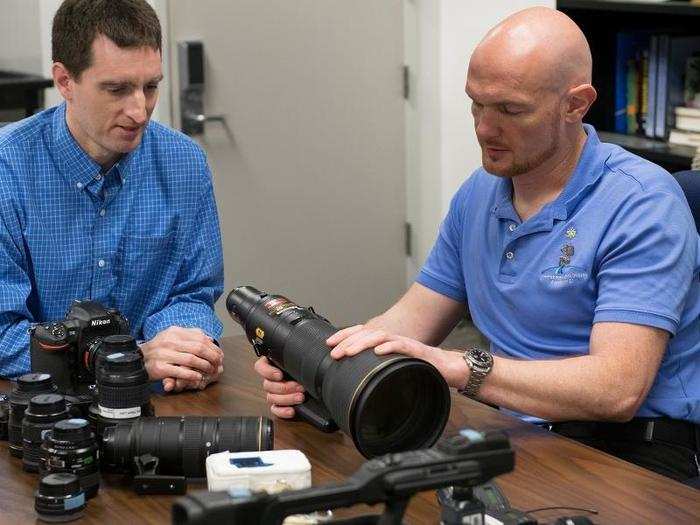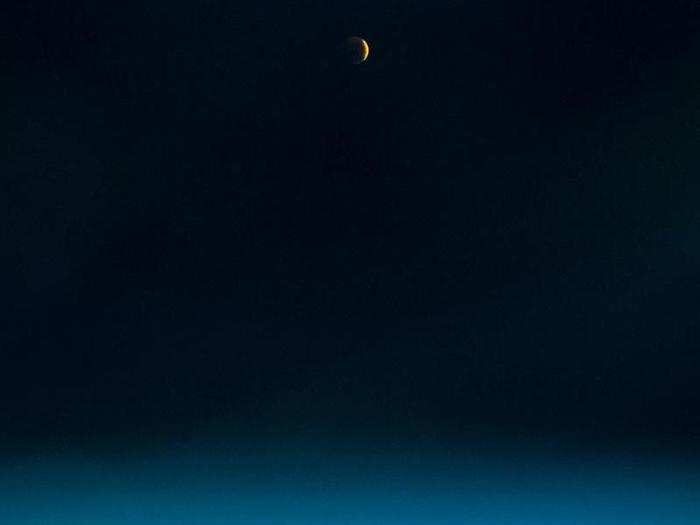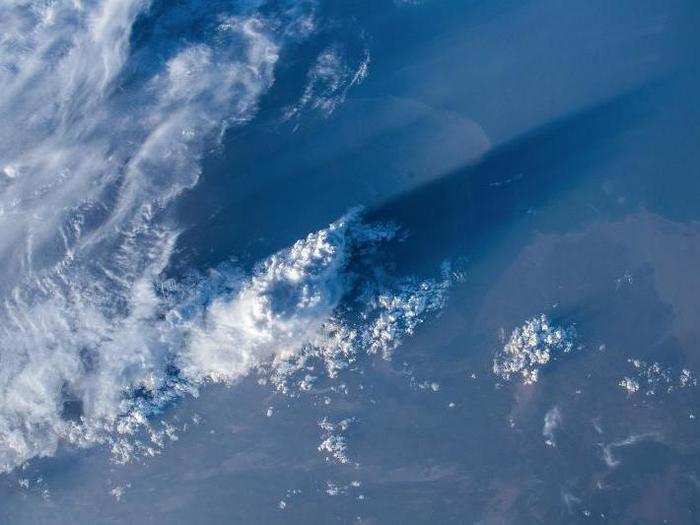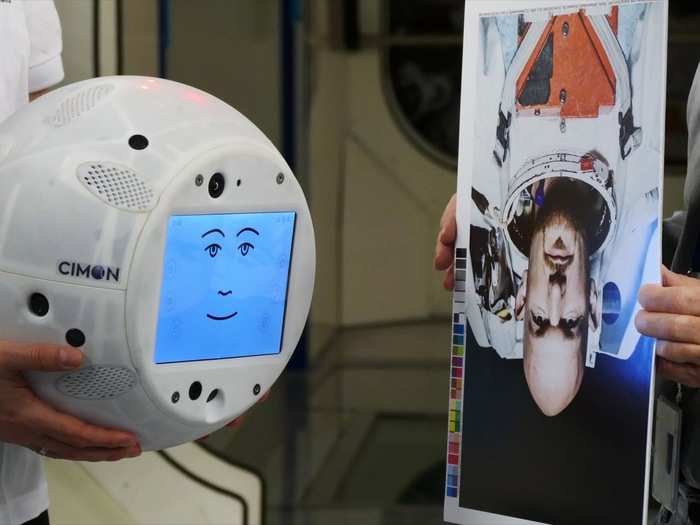Gerst trained on Earth to use all the photo gear at the space station before he launched into orbit.
In addition to being a steady shot, Gerst will be the commander of the Expedition 57 mission aboard the ISS.
On July 27, 2018 — when the moon was eclipsed by Earth's shadow — Gerst was ready. The core of the planet's shadow, called the umbra, colored the moon red because of the way Earth's atmosphere refracts the sun's light.
"Just took a photo of the lunar eclipse from the International Space Station. Tricky to capture," Gerst said in a caption for this picture. "The slight hue of blue is actually the Earth's atmosphere, just before the moon is 'diving into it.'"
The moon was in totality (fully shadowed by the umbra) for nearly an hour and 43 minutes. Views during the partial eclipse, when the moon is in Earth's outer shadow, or penumbra, were equally haunting.
"A partially eclipsed moon, with our neighbuoring [sic] planet in the background, just before diving into Earth's atmosphere. Just magical," Gerst said of this image.
Gerst managed to snap a handful of pictures before the blood moon wrapped up.
"Caught the moon leaving Earth's core shadow, just before setting over the South Atlantic," Gerst said of this photo. "Last photo of the lunar eclipse taken from ISS."
When he's not shooting a lunar eclipse, the German astronaut likes to photograph long shadows cast by cloud formations below him.
"Did I mention I love cloud shadows?" Gerst wrote on Flickr while sharing several images he's taken of the phenomena.
Gerst has also managed to record time-lapse videos of auroras on Earth.
"Alexander Gerst captured this time-lapse of a dancing aurora just 10 days into his Horizons mission aboard the International Space Station," the ESA said.
But Gerst's real work is running experiments in orbit. He's even working with a floating robotic head called CIMON, short for Crew Interactive Mobile Companion.







